Opinion & Analysis
A True Story About Putters (Part 1)
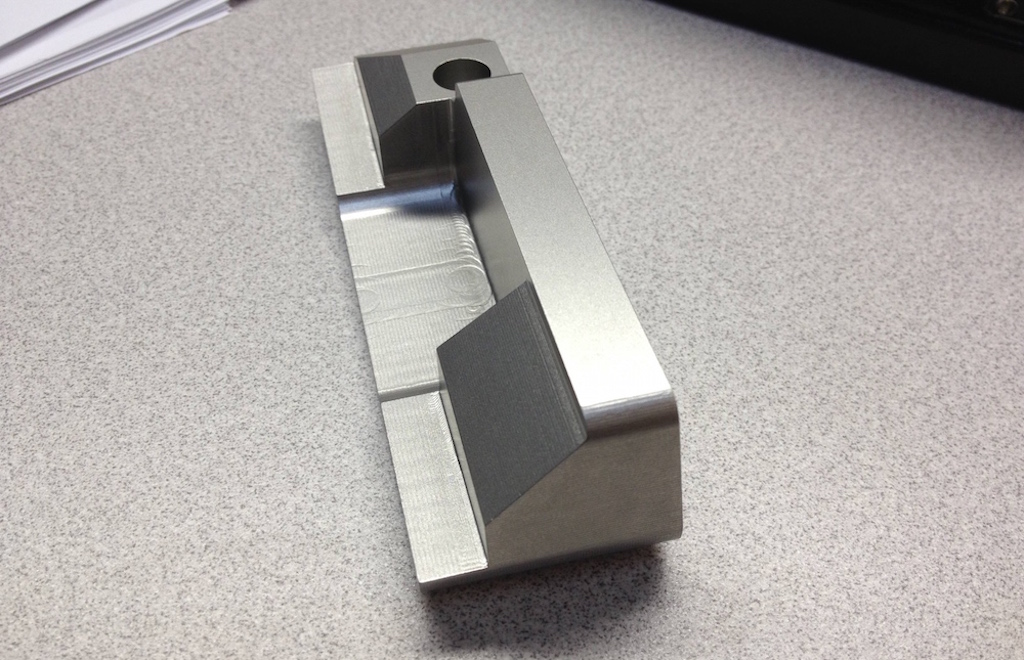
“Ball on Green,” or putting, is a statistical environment of its own and was my introduction into the golf equipment business. A mutual friend introduced me to Dave Pelz more than 40 years ago, saying that as two equipment nuts we deserved each other. At the time I fooled around with ideas, but Dave was the real thing with his own booth at the annual PGA Merchandise show.
I started attending the Show with him on my own nickel and years later ended up working full time with Dave in Abilene, Texas. I mention this only as background to my years of study on putting implements, both how and why they work. Unlike Dave, I didn’t focus on the putting stroke. My world was what happened when the club head contacted the ball and how that relationship could be optimized.
Now fast forward some 44 years and my phone rings. I’m retired and concentrating on how to drive the ball distances that violate the laws of physics given my club head speed. It’s an old friend from the golf business and after a bit of reminiscing he says, “Barnyard I have someone you must talk to. He has invented the best putter ever designed.”
That got my attention immediately, because my friend was not unknowledgeable and conversely I did not believe there was such a thing as one putter that was significantly better than others. That thought was my little secret which I did not divulge.
My friend went on to explain that the person who designed the putter was a certified genius with an IQ well over 200. As some intellectuals are inclined, he was not given to sympathy toward those with lesser intellect. The obvious problem ahead was that you could hit a wedge between our IQ’s, however, my friend assured me that he had prepared the genius. I was lacking in many areas, but I did know putters and could render an honest evaluation.
We agreed on a time and date and as a favor to my friend I called the designer. It took maybe 15 seconds for me to realize that this person was very uncomfortable speaking with someone well below his intellectual level and I had to get on common ground. I asked him to explain his design to me.
The concept revolved around optimum torsional effectiveness, or “forgiveness on off center hits” as it’s more commonly known. I immediately thought of the Bulls Eye putter that was designed in the 40’s. It’s a putter that’s still used on Tour by some players, and Johnny Miller shot his famed 63 at Oakmont in the ’73 Open with one.
The Bulls Eye is not exactly the epitome of torsional effectiveness, but I wasn’t going to open that door — questioning his design would be tantamount to a personal attack. So I asked him what loft he had on his standard model and he said, “Zero of course. The design precludes the need for face loft, something I have tested extensively.”
I then asked how he conducted his tests and he said, “On a pool table, to understand the performance of the head the testing environment must be perfect.”
He didn’t say, “You dolt,” but the inflection was there.
Up to that point I was on my good behavior, but admittedly diplomacy is not my strong suit.
[quote_box_center]”I’m sorry, but your premise of no loft is incorrect and your testing environment is not applicable,” I said. “Your putter design has a fatal flaw.”[/quote_box_center]
You could hear a sharp intake of breath.
[quote_box_center]”Why don’t you explain the technical reasons behind your comment,” he said, his words heavy with sarcasm.[/quote_box_center]
It didn’t take me long.
[quote_box_center]”Putting is about controlling speed,” I said. “Some surfaces are excellent, some shall we say politely are less so. On the green the ball is sitting down in the grass and needs to get up onto the surface so it can roll on its axis and have minimal influence from imperfections. Depending on the quality of the surface, a launch angle off the face between 1.25 and 1.75 degrees is optimal (I thought I’d throw that in to try and penetrate his air of superiority). To do so, you must have face loft ideally matching the putting surface.”[/quote_box_center]
I was prepared to supply more of my putter design knowledge, but he had heard enough — which was basically that I disagreed with him, an unacceptable position.
In a thinly disguised effort to hide his disapproval, he ended the conversation making it clear there would be nothing further worth discussion. I told my friend the story and that I had to be honest about what I knew to be true. He said not to worry; they had found a wealthy individual who loved golf and they thought he was going to invest.
They were right — he did and the operation busted out (and to repeat this is a true story).
To be continued…
- LIKE41
- LEGIT4
- WOW13
- LOL10
- IDHT2
- FLOP5
- OB3
- SHANK9
Opinion & Analysis
The Wedge Guy: What really makes a wedge work? Part 1

Of all the clubs in our bags, wedges are almost always the simplest in construction and, therefore, the easiest to analyze what might make one work differently from another if you know what to look for.
Wedges are a lot less mysterious than drivers, of course, as the major brands are working with a lot of “pixie dust” inside these modern marvels. That’s carrying over more to irons now, with so many new models featuring internal multi-material technologies, and almost all of them having a “badge” or insert in the back to allow more complex graphics while hiding the actual distribution of mass.
But when it comes to wedges, most on the market today are still single pieces of molded steel, either cast or forged into that shape. So, if you look closely at where the mass is distributed, it’s pretty clear how that wedge is going to perform.
To start, because of their wider soles, the majority of the mass of almost any wedge is along the bottom third of the clubhead. So, the best wedge shots are always those hit between the 2nd and 5th grooves so that more mass is directly behind that impact. Elite tour professionals practice incessantly to learn to do that consistently, wearing out a spot about the size of a penny right there. If impact moves higher than that, the face is dramatically thinner, so smash factor is compromised significantly, which reduces the overall distance the ball will fly.
Every one of us, tour players included, knows that maddening shot that we feel a bit high on the face and it doesn’t go anywhere, it’s not your fault.
If your wedges show a wear pattern the size of a silver dollar, and centered above the 3rd or 4th groove, you are not getting anywhere near the same performance from shot to shot. Robot testing proves impact even two to three grooves higher in the face can cause distance loss of up to 35 to 55 feet with modern ‘tour design’ wedges.
In addition, as impact moves above the center of mass, the golf club principle of gear effect causes the ball to fly higher with less spin. Think of modern drivers for a minute. The “holy grail” of driving is high launch and low spin, and the driver engineers are pulling out all stops to get the mass as low in the clubhead as possible to optimize this combination.
Where is all the mass in your wedges? Low. So, disregarding the higher lofts, wedges “want” to launch the ball high with low spin – exactly the opposite of what good wedge play requires penetrating ball flight with high spin.
While almost all major brand wedges have begun putting a tiny bit more thickness in the top portion of the clubhead, conventional and modern ‘tour design’ wedges perform pretty much like they always have. Elite players learn to hit those crisp, spinny penetrating wedge shots by spending lots of practice time learning to consistently make contact low in the face.
So, what about grooves and face texture?
Grooves on any club can only do so much, and no one has any material advantage here. The USGA tightly defines what we manufacturers can do with grooves and face texture, and modern manufacturing techniques allow all of us to push those limits ever closer. And we all do. End of story.
Then there’s the topic of bounce and grinds, the most complex and confusing part of the wedge formula. Many top brands offer a complex array of sole configurations, all of them admittedly specialized to a particular kind of lie or turf conditions, and/or a particular divot pattern.
But if you don’t play the same turf all the time, and make the same size divot on every swing, how would you ever figure this out?
The only way is to take any wedge you are considering and play it a few rounds, hitting all the shots you face and observing the results. There’s simply no other way.
So, hopefully this will inspire a lively conversation in our comments section, and I’ll chime in to answer any questions you might have.
And next week, I’ll dive into the rest of the wedge formula. Yes, shafts, grips and specifications are essential, too.
- LIKE19
- LEGIT6
- WOW1
- LOL1
- IDHT2
- FLOP2
- OB1
- SHANK1
Golf's Perfect Imperfections
Golf’s Perfect Imperfections: Amazing Session with Performance Coach Savannah Meyer-Clement

In this week’s episode, we spent some time with performance coach Savannah Meyer-Clement who provides many useful insights that you’ll be able to implement on the golf course.
- LIKE0
- LEGIT0
- WOW0
- LOL0
- IDHT0
- FLOP0
- OB0
- SHANK0
19th Hole
Vincenzi’s 2024 RBC Heritage betting preview: Patrick Cantlay ready to get back inside winner’s circle

Just a two-hour drive from Augusta National, the PGA TOUR heads to Harbour Town Golf Links in Hilton Head Island, S.C. Hilton Head Island is a golfer’s paradise and Harbour Town is one of the most beautiful and scenic courses on the PGA TOUR.
Harbour Town Golf Links is a par-71 that measures 7,121 yards and features Bermuda grass greens. A Pete Dye design, the course is heavily tree lined and features small greens and many dog legs, protecting it from “bomb-and-gauge” type golfers.
The field is loaded this week with 69 golfers with no cut. Last year was quite possibly the best field in RBC Heritage history and the event this week is yet another designated event, meaning there is a $20 million prize pool.
Most of the big names on the PGA Tour will be in attendance this week with the exceptions of Hideki Matsuyama and Viktor Hovland. Additionally, Webb Simpson, Shane Lowry, Gary Woodland and Kevin Kisner have been granted sponsors exemptions.
Past Winners at Harbour Town
- 2023: Matt Fitzpatrick (-17)
- 2022: Jordan Spieth (-13)
- 2021: Stewart Cink (-19)
- 2020: Webb Simpson (-22)
- 2019: CT Pan (-12)
- 2018: Sotoshi Kodaira (-12)
- 2017: Wesley Bryan (-13)
- 2016: Branden Grace (-9)
- 2015: Jim Furyk (-18)
In this article and going forward, I’ll be using the Rabbit Hole by Betsperts Golf data engine to develop my custom model. If you want to build your own model or check out all of the detailed stats, you can sign up using promo code: MATTVIN for 25% off any subscription package (yearly is best value).
Key Stats For Harbour Town
Let’s take a look at key metrics for Harbour Town Golf Links to determine which golfers boast top marks in each category over their past 24 rounds.
Strokes Gained: Approach
Strokes Gained: Approach is exceedingly important this week. The greens at Harbour Town are about half the size of PGA TOUR average and feature the second-smallest greens on the tour. Typical of a Pete Dye design, golfers will pay the price for missed greens.
Total SG: Approach Over Past 24 Rounds
- Scottie Scheffler (+1.27)
- Tom Hoge (+1.27)
- Corey Conners (+1.16)
- Austin Eckroat (+0.95)
- Cameron Young (+0.93)
Good Drive %
The fairways at Harbour Town are tree lined and feature many dog legs. Bombers tend to struggle at the course because it forces layups and doesn’t allow long drivers to overpower it. Accuracy is far more important than power.
Good Drive % Over Past 24 Rounds
- Brice Garnett (88.8%)
- Shane Lowry (+87.2%)
- Akshay Bhatia (+86.0%)
- Si Woo Kim (+85.8%)
- Sepp Straka (+85.1%)
Strokes Gained: Total at Pete Dye Designs
Pete Dye specialists tend to play very well at Harbour Town. Si Woo Kim, Matt Kuchar, Jim Furyk and Webb Simpson are all Pete Dye specialists who have had great success here. It is likely we see some more specialists near the top of the leaderboard this week.
SG: TOT Pete Dye per round over past 36 rounds:
- Xander Schauffele (+2.27)
- Scottie Scheffler (+2.24)
- Ludvig Aberg (+2.11)
- Brian Harman (+1.89)
- Sungjae Im (+1.58)
4. Strokes Gained: Short Game (Bermuda)
Strokes Gained: Short Game factors in both around the green and putting. With many green-side bunkers and tricky green complexes, both statistics will be important. Past winners — such as Jim Furyk, Wes Bryan and Webb Simpson — highlight how crucial the short game skill set is around Harbour Town.
SG: SG Over Past 24 Rounds
- Jordan Spieth (+1.11)
- Taylor Moore (+1.02)
- Wyndham Clark (+0.98)
- Mackenzie Hughes (+0.86)
- Andrew Putnam (+0.83)
5. Greens in Regulation %
The recipe for success at Harbour Town Golf Links is hitting fairways and greens. Missing either will prove to be consequential — golfers must be in total control of the ball to win.
Greens in Regulation % over past 24 rounds:
- Brice Garnett (+75.0%)
- Scottie Scheffler (+69.9%)
- Corey Conners (+69.0%)
- Shane Lowry (+68.3%)
- Patrick Rodgers (+67.6%)
6. Course History
Harbour Town is a course where players who have strong past results at the course always tend to pop up.
Course History over past 24 rounds:
- Patrick Cantlay (+2.34)
- Cam Davis (+2.05)
- J.T. Poston (+1.69)
- Justin Rose (+1.68)
- Tommy Fleetwood (+1.59)
The RBC Heritage Model Rankings
Below, I’ve compiled overall model rankings using a combination of the five key statistical categories previously discussed — SG: Approach (24%), Good Drives (20%), SG: SG (14%), SG: Pete Dye (14%), GIR (14%), and Course History (14%)
- Shane Lowry
- Russell Henley
- Scottie Scheffler
- Xander Schauffele
- Corey Conners
- Wyndham Clark
- Christiaan Bezuidenhout
- Matt Fitzpatrick
- Cameron Young
- Ludvig Aberg
2024 RBC Heritage Picks
Patrick Cantlay +2000 (FanDuel)
With the exception of Scottie Scheffler, the PGA Tour has yet to have any of their star players show peak form during the 2024 season. Last week, Patrick Cantlay, who I believe is a top-5 players on the PGA Tour, took one step closer to regaining the form that’s helped him win eight events on Tour since 2017.
Cantlay limped into the Masters in poor form, but figured it out at Augusta National, finishing in a tie for 20th and ranking 17th for the week in Strokes Gained: Ball Striking. The former FedEx Cup champion will now head to one of his favorite golf courses in Harbour Town, where he’s had immaculate results over the years. In his six trips to the course, he’s only finished worse than 7th one time. The other finishes include three third places (2017, 2019, 2023) and one runner-up finish (2022). In his past 36 rounds at Harbour Town, Cantlay ranks 1st in Strokes Gained: Total per round at the course by a wide margin (+2.36).
Cantlay is winless since the 2022 BMW Championship, which is far too long for a player of his caliber. With signs pointing to the 32-year-old returning to form, a “signature event” at Harbour Town is just what he needs to get back on the winning track.
Tommy Fleetwood +3000 (FanDuel)
I truly believe Tommy Fleetwood will figure out a way to win on American soil in 2024. It’s certainly been a bugaboo for him throughout his career, but he is simply too talented to go another season without winning a PGA Tour event.
At last week’s Masters Tournament, Fleetwood made a Sunday charge and ended up finishing T3 in the event, which was his best ever finish at The Masters. For the week, the Englishman ranked 8th in the field in Strokes Gained: Approach, 10th in Strokes Gained: Ball Striking and 16th in Strokes Gained: Putting.
Harbour Town is a perfect layout for Fleetwood, and he’s had relative success at this Pete Dye design in the past. In his four trips to the course, he’s finished inside of the top 25 three times, with his best finish, T10, coming in 2022. The course is pretty short and can’t be overpowered, which gives an advantage to more accurate players such as Fleetwood. Tommy ranks 8th in the field in Good Drive % and should be able to plot his way along this golf course.
The win is coming for Tommy lad. I believe there’s a chance this treasure of a golf course may be the perfect one for him to finally break through on Tour.
Cameron Young +3300 (FanDuel)
Cameron Young had a solid Masters Tournament last week, which is exactly what I’m looking for in players who I anticipate playing well this week at the RBC Heritage. He finished in a tie for 9th, but never felt the pressure of contending in the event. For the week, Young ranked 6th in Strokes Gained: Off the Tee and 6th in Strokes Gained: Ball Striking.
Despite being one of the longest players off the tee on the PGA Tour, Young has actually played some really good golf on shorter tracks. He finished T3 at Harbour Town in 2023 and ranks 20th in the field in Good Drive% and 16th in Greens in Regulation in his past 24 rounds. He also has strong finishes at other shorter courses that can take driver out of a players hand such as Copperhead and PGA National.
Young is simply one of the best players on the PGA Tour in 2024, and I strongly believe has what it takes to win a PGA Tour event in the very near future.
Corey Conners +5500 (FanDuel)
Corey Conners has had a disappointing year thus far on the PGA Tour, but absolutely loves Harbour Town.
At last week’s Masters Tournament, the Canadian finished T30 but ranked 20th in the field in Strokes Gained: Approach. In his past 24 rounds, Conners ranks 3rd in the field in Strokes Gained: Approach, 3rd in Greens in Regulation % and 24th in Good Drive %.
In Conners’ last four trips to Harbour Town, his worst finish was T31, last season. He finished T4 in 2021, T12 in 2022 and ranks 8th in Strokes Gained: Total at the course over his past 36 rounds.
Conners hasn’t been contending, but his recent finishes have been encouraging as he has finished in the top-25 in each of his past three starts prior to The Masters, including an impressive T13 at The PLAYERS. His recent improvement in ball striking as well as his suitability for Harbour Town makes Conners a high upside bet this week.
Shane Lowry (+7500) (FanDuel)
When these odds were posted after Lowry was announced in the field, I have to admit I was pretty stunned. Despite not offering much win equity on the PGA Tour over the last handful of years, Shane Lowry is still a top caliber player who has the ability to rise to the top of a signature event.
Lowry struggled to score at The Masters last week, but he actually hit the ball really well. The Irishman ranked 1st for Strokes Gained: Approach on the week and 7th in Strokes Gained: Ball Striking. As usual, it was the putter that let him down, as he ranked 60th in the field in Strokes Gained: Putting.
Harbour Town is most definitely one of Lowry’s favorite courses on the PGA Tour. In his six starts there, he’s finished in the top 10 three times, including third twice. Lowry is sensational at Pete Dye designs and ranks 7th in Strokes Gained: Total in his past 36 rounds on Dye tracks.
Lowry is perfect for Harbour Town. In his past 24 rounds, he ranks 5th in Strokes Gained: Approach, 2nd in Good Drive% and 5th in Green in Regulation %. If he figures it out on the greens, Shane could have his first win in America since 2015.
Lucas Glover +12000 (FanDuel)
This is one of my weekly “bet the number” plays as I strongly believe the odds are just too long for a player of Glover’s caliber. The odds have been too long on Glover for a few weeks now, but this is the first event that I can get behind the veteran being able to actually contend at.
Glover is quietly playing good golf and returning to the form he had after the understandable regression after his two massive victories at the end of 2023. He finished T20 at The Masters, which was his best ever finish at Augusta National. For the week, Lucas ranked 18th for Strokes Gained: Approach and 20th in Strokes Gained: Ball Striking.
Over his past 24 rounds, Glover ranks 9th in Strokes Gained: Approach and 13th in Good Drive %. Harbour Town is a short course that the 44-year-old will be able to keep up with the top players on Tour off the tee. He’s played the course more than 20 times, with mixed results. His best finishes at Harbour Town include a T7 in 2008, but recently has a finish of T21 in 2020.
Glover has proven he can contend with the stars of the Tour on any given week, and this number is flat out disrespectful.
- LIKE30
- LEGIT5
- WOW2
- LOL1
- IDHT1
- FLOP2
- OB0
- SHANK2
-

 19th Hole1 week ago
19th Hole1 week agoDave Portnoy places monstrous outright bet for the 2024 Masters
-

 19th Hole3 weeks ago
19th Hole3 weeks agoThings got heated at the Houston Open between Tony Finau and Alejandro Tosti. Here’s why
-

 19th Hole1 week ago
19th Hole1 week agoTiger Woods arrives at 2024 Masters equipped with a putter that may surprise you
-

 19th Hole2 weeks ago
19th Hole2 weeks agoReport: Tiger Woods has ‘eliminated sex’ in preparation for the 2024 Masters
-

 19th Hole5 days ago
19th Hole5 days agoTwo star names reportedly blanked Jon Rahm all week at the Masters
-

 19th Hole4 days ago
19th Hole4 days agoNeal Shipley presser ends in awkward fashion after reporter claims Tiger handed him note on 8th fairway
-

 19th Hole3 days ago
19th Hole3 days agoReport: LIV Golf identifies latest star name they hope to sign to breakaway tour
-

 19th Hole2 weeks ago
19th Hole2 weeks agoAddiction, spinal fusion, and scam artists – Everything Anthony Kim revealed in candid interview with David Feherty



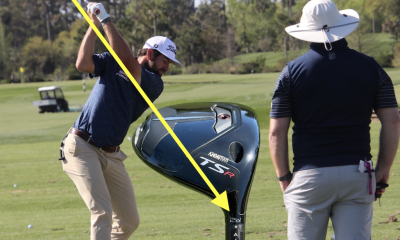

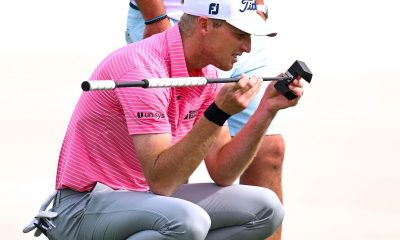

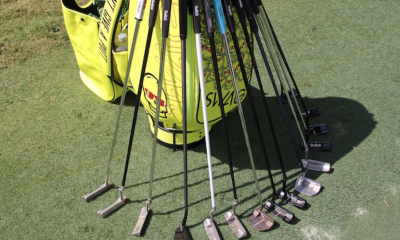

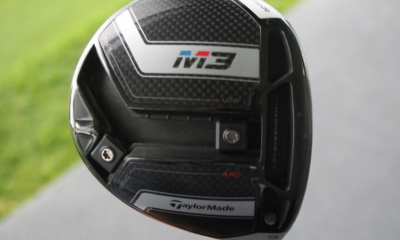

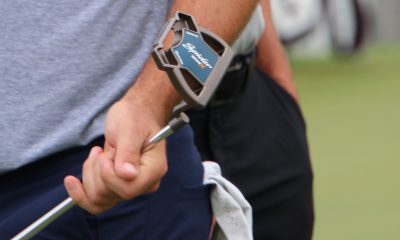















BIG STU
Apr 25, 2015 at 5:27 am
It all boils down to a couple of thing one of them being common sense and common business sense. Barney seems to have both IMHO. He just stated the facts from his common and business experiences in the golf industry. And I will make a comment on the loft thing and it is a common phrase different strokes for different folks. I for one forward press and hold it at impact so I need a putter set at around 3.5* static where someone who does not forward press will need less. That is why you have club fitters and putter bending machines. To get back to the original topic you have to find a niche for any product whether it is in golf or widgets. I would have to say Barney knows his stuff
Rhoward
Jan 27, 2015 at 8:56 am
IQ’s value itself is debatable. IQ in the beginning was useful. It was developed by the Army to judge whether a soldier could handle explosives and the alike. The original scale does not go above 135 nor below 65. Only 3% are above or below those values. The value of an IQ above 135 is not given by the original design. Einstein’s IQ is in question given the new evidence in Israel’s archives — love letters showing his first wife came up with key ideas, and all the surviving physics notes that are hand written are in the wife’s handwriting. During the Manhattan Project and again when the Space Shuttle blew up — the big wigs (super high IQ’d physicists) debated the whys and wherefores. Socially, high IQ club membership usually takes hundreds of hours of practice testing to gain membership (yes, it’s a learned behavior). The great industrial epoch makers like Edison, Bell and Tesla would not have tested well; their knowledge was too single minded and their personalities too irascible. Lastly, child geniuses have not shown to achieve much when grown. This is all to say that Adams is right — the best ideas of engineering are forged in the heat of argument between like minded but tolerant mechanically minded individuals. The Wright Brothers debated fiercely for hours, days and even weeks on end over the smallest design details. They constructed their own primitive wind tunnels to help settle those fist pumping mental wrestling matches.
Bread
Jan 26, 2015 at 4:08 pm
Einstein had an IQ of 160. An IQ over 200 has been recorded exactly 3 times…
holly
Jan 13, 2015 at 9:30 pm
david kargetta? black swan?
guy couldnt hear a question, let alone a differing opinion
bradford
Jan 8, 2015 at 1:03 pm
I find I putt better when I rub my older cat with my putter. It is important to note this does NOT work with the kitten.
I can promise that anyone who putts with MOI, spin, torsion, and loft in mind hasn’t putted well in years.
Gotta love your putter.
.
bradford
Jan 8, 2015 at 1:08 pm
oh, and there are ~15 living people with IQ’s at 200+. I doubt seriously any of them is going into (and failing at) the gimmicky putter industry. Not when they can make HUGE money in the gimmicky pharma industry.
Paul
Jan 7, 2015 at 5:10 pm
Love it, ‘Barnyard’!
Can’t wait for the next chapter.
ca1879
Jan 7, 2015 at 4:23 pm
Barney – are you ready to accept yet that no amount of straight talk and factual information will change a believers mind? Almost all golf related businesses fail or struggle, but telling an ambitious entrepreneur that will just harden their resolve to forge ahead. Laying out the facts on golf club performance will only prompt those who think their miracle club has revolutionized some aspect of their game, when they are really just falling prey to the many ways we can all fool ourselves. This unfortunate example, is just a another sad tale in the long list of things we golfers fall for. This con person sold people with no understanding of basic science a product that does not work as claimed (not saying it doesn’t work, but it’s not because of the imaginary zero MOI, or because it resembles a B2 wing) by using a “sciency sounding” line of patter. We’re a pretty gullible lot when you get right down to it, and it’s not just where golf equipment is concerned.
ca1879
Jan 7, 2015 at 4:30 pm
“will only prompt” should be “will not change the minds of”
Barney Adams
Jan 7, 2015 at 10:04 pm
Golfers have passion and when it comes to the business side I try to help them by ” telling it as it is” some are appreciative some call me a wet blanket ( or worse) Years ago a guy came to me with a plan for a putter Infomercial. I explained that he didn’t have enough margin cost to sale price on TV. He got furious said I didn’t want anyone else to have the success I did etc. ( and I mean really angry) He went forward, all in financially. Went bankrupt.
Scott
Jan 8, 2015 at 2:40 pm
Thanks Barney for your articles and stories. Keep them coming!
Jonny B
Jan 7, 2015 at 11:25 am
This story just seems like the ramblings of an old guy. Oh wait, it is.
Not really too familiar with all the technical stuff behind the theory of this article, but I can tell you my putting has dramatically improved using a zero-loft putter by Cure. Take it for what it’s worth. http://cureputters.com/zero-loft-tru-roll.aspx
bradford
Jan 8, 2015 at 12:58 pm
What do I call MY overspin putter? MONEYYYY…
derek
Jan 10, 2015 at 12:49 pm
i got a cure putter on ebay cheap, have u gotten over the aluminum bat sound?
Ken
Jan 7, 2015 at 11:20 am
The best putter is the one that just holed the last 30 footer.
bradford
Jan 8, 2015 at 1:04 pm
^this
Merty Huckle
Jan 7, 2015 at 11:20 am
you know, This is really interesting. At first I was pissed with the To be continued, ut I have to admit I’m hooked.
RG
Jan 7, 2015 at 4:49 am
That guy is crazy!! Personally I’ve found that eye of newt roasted in bats blood lightly sprinkled over your putter while chanting,”Oingo Boingo Bingo Bar, I need a birdie but I’ll take a Par,’ works everytime.
Pooch
Jan 7, 2015 at 9:41 pm
RG,
Now where can I get the Eye of Newt and the Bats Blood? Thanks for the tip.
Pooch
jesse
Jan 9, 2015 at 6:35 am
Now you have me totally confused !
8thehardway
Jan 7, 2015 at 2:40 am
Mad genius with 200 IQ ignores Barney’s good advice, finishes flawed design.
POW!!!
Jack Hamm’s Zero Latitude putter goes on sale (it looks like a 3-foot long hammer)
Jack now doing Tee It Forward promos for Barney
killerbgolfer
Jan 6, 2015 at 11:02 pm
Great story!
Stretch
Jan 6, 2015 at 12:52 pm
A couple of points while waiting for Part 2; loft is needed to get the ball to roll especially on less than perfect greens, the more the MOI in a club the more likely the ball striking becomes poor.
3-4 degrees of loft works best for smooth fast greens as well as grainy slow and bumpy ones. On fast greens the extra loft will let the golfer apply more force to get the same distance. On short side hill putts on fast smooth greens this means the ball will start on the line instead of slightly sliding downhill at the release of the ball off the face causing missed putts unrelated to the quality of the stroke.
Miller’s 63 was with persimmon woods, muscle back irons and the Bulls Eye. All had a small MOI and needed great ball striking to perform.
Sb
Jan 6, 2015 at 6:15 pm
As someone who has studied putting and the technology behind putters and loft specifically, loft is probably the most important individual factor in improving speed or distance control.
Most amateurs buy putters off the rack and generally the putter has somewhere from 2-4*. Add the fact that most of those players add loft at impact and now have effective lofts of 4-6 degrees sometimes! This creates backspin and causes the ball to lose pace and skid offline.
Bottom line is, on green speeds around 10 on average, an effective loft of 1 Degree is ideal for creating neutral launch. So for those golfers, having a static loft on a putter of 0 is necessary to achieve the 1-1.5 degrees of ideal effective loft.
Ponjo
Jan 7, 2015 at 4:12 pm
Indeed. 52years of age and Miller still my favourite ever golfer
Brad Ingarfield
Jan 8, 2015 at 7:54 am
“The more MOI in a club the more likely ball striking becomes poor” – interesting observation. I have often thought about this. Do you have any evidence or is it your opinion? No disrespect intended!
Stretch
Jan 10, 2015 at 11:26 am
The MOI opined about concerns how small headed putters and clubs demand a strike that is solid. Large headed clubs disguise the need for a precise by giving results when missing the sweet spot.
No disrespect taken. 5 decades of playing at and with players in tournaments where the players’ handicaps (if created in the Tour players case) would be +2-+7 range.
jesse
Jan 9, 2015 at 6:48 am
Stretch: When does “Part 2” come around? I’ve been looking all over this website.
Regarding “getting the ball rolling”; I always thought it skidded the first few inches anyway?
Not sure about the mojo of the MOI. If you cannot strike a putt solidly, more than likely it took more than par to get to where you can putt. Not much chance of a 63 there.
So you are advocating using a 3-4 degree putter for “everything”. On those fast greens and applying more force, wouldn’t that possibly cause more “un-solid” hits, or non-solid hits, or miss-hits, and more sidespin (and however slight it might be), therefore possibly starting on the right line, but never staying there. I’ve seen a guy cut every putt, be he seems to make more than everyone else. Just sayin
Stretch
Jan 10, 2015 at 11:40 am
Part 2 is up to the masters of the WRX site. I did try the Yar putter early in its life and could not get the ball rolling properly in the first 2″. No loft = no “tumble roll.” The ball may skid to some degree but the less it does the more the ball will stay on the line until the break of the green changes its direction.
More force does not necessarily cause miss hits and sidespin. What does cause those conditions is not applying it parallel to the line the eyes look down. This is the secret to hit solid accurate golf shots no matter what the club used.
I know of a player still playing on the Tour whose cut shot putting style evolved from an arced stroke to a hard slice. If you do it consistently it works. Slow grainy greens are not so productive for this style of stroke.
Steve Barry
Jan 6, 2015 at 11:36 am
I was first thinking Yar as well, but considering there wasn’t anything about “him” saying they needed to ‘focus on the product, not the person’ I’m starting to think it might be something else. Here’s to hoping!
aharp
Jan 6, 2015 at 12:02 pm
This is a “TRUE” story. Seek the “Truth”?
D man
Jan 6, 2015 at 11:21 am
So what was the point in this article?
jesse
Jan 9, 2015 at 6:50 am
The point in this article is you need a putter with no loft?
MattyTeaks
Jan 6, 2015 at 10:16 am
Yep. Guessing he’s referring to the yar putter.
http://grantland.com/features/a-mysterious-physicist-golf-club-dr-v/
Don
Jan 6, 2015 at 10:55 am
o.k. That is seriously messed up.
Jafar
Jan 6, 2015 at 11:28 am
Wow, what a story…
stripe
Jan 6, 2015 at 12:04 pm
WOW.
A
Jan 6, 2015 at 12:34 pm
Facinating Grantland article and the writer got killed for it but he shouldn’t have been. This needs to be made into a movie.
spazo
Jan 6, 2015 at 12:40 pm
HOLY CRAP! what a story!
Tom Bowles
Jan 6, 2015 at 1:31 pm
Holy crap! That’s nuts!
Alex
Jan 6, 2015 at 1:51 pm
Crazy story, but not the likely candidate for Barry’s story because Barry uses the masculine pronoun to describe the ‘genius’. This could be an intentional switch though..
Marshall
Jan 7, 2015 at 7:53 am
That article makes it clear that Gary McCord is a liar and a fool, but that was pretty much already known.
Josh
Jan 7, 2015 at 11:53 am
I was thinking the same thing. Best Grantland article ever.
Jonny B
Jan 7, 2015 at 12:02 pm
Crazy story. Had no idea about Dr. V or Yar prior to today. If this is in fact the putter/person Barney was referring to, which it does sound like, that’s amazing.
If anything, I am interested in trying the Yar putter. Anyone already done so? Their website is borderline pathetic. If it is truly the gamechanging breakthrough piece of equipment it is advertised to be, don’t you think people would have heard about it/been using it by now? Marketing FAIL…
steve
Jan 7, 2015 at 12:49 pm
That is by far the most interesting story i have gotten while on WRX.
Great find
Platonist
Jan 9, 2015 at 4:17 am
This grantland article was one of the best I have read in years. Solid investigative journalism!
Jafar
Jan 6, 2015 at 9:55 am
Part 2 please…